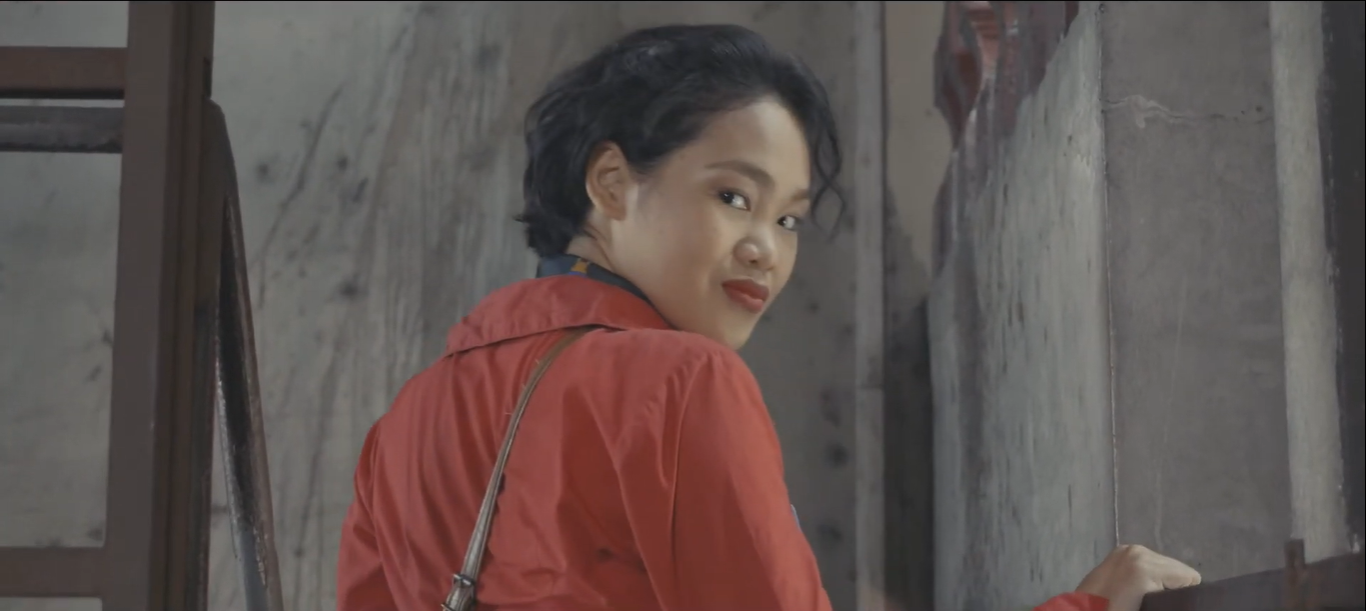By LORRAINE C. SUAREZ

A DECK of cards presents many possibilities — the opportunity to tangle with Lady Luck; the prospect of striking aces. Through the rose-colored print of diamonds and changing hands of card and coin, players are given the chance of winning against the odds. However, it is only a paltry achievement upon considering the stakes that are involved.
Squeaky-clean scholar Jade (Kare Teodoro) is only one of the many students whose scholarship is terminated by their school. Desperate for a release from her academic frustrations, she accepts the invitation of classmate Via (Chase Salazar) to venture inside an abandoned classroom. Through the auditory guidance of a golden tracker earring, Jade enters an obscure and previously-unknown world of backdoor gambling that is ingrained into their school deeper than she initially thought.
Boasting an all-female cast and a production team led by Artlets, Golden serves as an official entry in this year’s Lift-Off Global Network Sessions, an online film festival dedicated to showcasing the works of independent filmmakers. Previously, the short film has also secured awards in last year’s Sine Reel where it won Best Poster, Best Sound, and Best Cinematography.
Golden achieves a lot in its 15-minute duration. For one, it establishes a strong entrance by featuring one of its high points as the first scene; making the audience wonder about the factors that led to this event. It also discusses an interesting narrative about academic scholars. With a story set in the year 1957, director Isabel Reyes introduces an aesthetically pleasing visual, coupled with a different take on its protagonist.
Jade is first established as someone who does not have much going on in her life. School administrators characterize her as someone who is unassuming, and just recently, her scholarship is revoked due to a lack of extracurriculars. Likewise, her personality is best reflected by a plethora of dull-colored blouses and neat slacks.
Upon joining her school’s gambling ring, Jade’s character shifts and this transition is all the more highlighted by Teodoro’s expressive face. As Jade continues playing her hand and her relationship with Via deepens, she switches to wearing more glamorous and colorful clothing. A black halter top, a silk scarf; these are only some of the additions that are indicative of the changes.
The visuals does its best to evoke the feeling of the film’s setting. When it comes to the color grading, a yellowish tone is applied in order to give off nostalgic vibes. As for the costumes, patterns that are appropriate for the time period — like plaid and polka dots — are worn. Its props also go a long way in heightening production value and historical accuracy, such as with the inclusion of typewriters and rotary telephones. Nonetheless, certain improvements can be made, especially when it comes to the hair and makeup department; it could feature styles that are more reflective of the 50s.
In addition, Golden’s short run time manifests some criticisms regarding its resolution. The audience could have benefited greatly if more background on the gambling den is provided, along with more screen time for the characters of Amelia Reyes and Teresita Tan.
The indicated faults, however, do not negate the impact of the film completely. With an extensive soundtrack and stimulating camera work, it still delivers a flowing narrative. Through tracking and arc shots, the quality of movement is captured and seamless transitions are achieved. Its soundtrack also encompasses a wide variety of genres: rock and roll, country, and even lo-fi. Despite lo-fi not fitting in with the story’s setting, the song works surprisingly well among scenes in combination with close up angles of hands, money, and cards — bringing in to mind parallels from The Hangover and James Bond films.
For all its merits, Golden promises a visual-driven production as well as a spirited performance from its main actor. In the span of less than half an hour, it demonstrates a fun and convivial plot while tackling the theme of corruption coming from the least expected source. Illegal gambling is portrayed as a lesser evil — although a bit glamorized in its portrayal, it sends the message of resistance against systemic injustice. With these hidden depths, the film becomes noteworthy for viewers that are looking for an entertaining yet short watch. F



